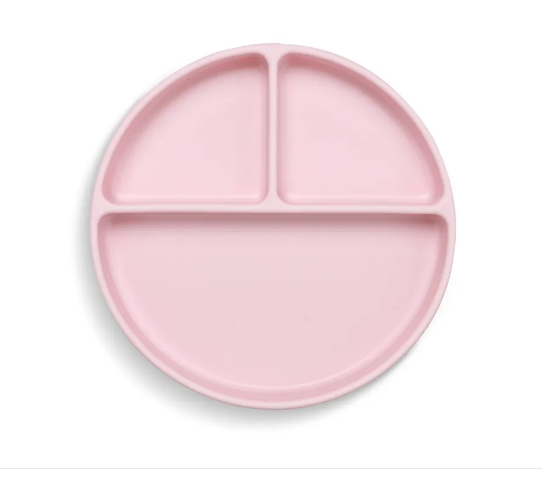Material Composition: Silicone vs Plastic Bowls
Understanding Silicone: From Sand to Polymer
Silicone is not just a type of plastic, despite popular opinion. It is a man-made polymer that is made from silicon, a natural element that comes from silicates, which are found in sand and quartz and go through intense processing. The material created through this procedure has a highly flexible, heat-resistant and robust structure, perfect for the kitchen: like spatulas, baking mats and oven gloves. Manufacture One of the most important features of Silicone kitchenware is the fact that it is made using FDA-approved food-grade silicone, formulated to guarantee safe food contact. And when this class of silicone is in direct contact with food, you can enjoy peace of mind that your silicone is safe for culinary applications.
Plastic Basics: Petrochemical Origins
Plastic, in contrast to silicone, is made from petrochemicals — raw materials made from fuel fossils. Plastic is fluid when it is created so the polymers are combined with other substances during creation and become different kinds of plastic. The kitchen is a popular location, and such material used include polyethylene or polypropylene for its versatile and inexpensive qualities. But the manufacturing and disposal of plastics are not without consequences to the environment. The pervasive use of fossil fuels and pollution add to the convenience of the substances. While common in kitchen objects such as containers and wrap, the environmental consequences of plastics challenge us to reassess its pervasiveness in our everyday world.
Key Differences in Molecular Structure
The chemistry of silicone and plastic explains their unique distinguishing kitchenware properties. The siloxane structure of silicone chains becomes the reason behind its unusual elasticity and thermal stability. Plastic on the other hand, generally comprises carbon-chains and may not be able to withstand high temperature nor is it as flexible. These structural differences also influence the potential toxicity of the toxicants entrained particularly as silicone is often considered to be an inert alternative because it possess low reactivity. We thought that it would be interesting to understand the underlying molecular differences between these in order to asses which material will answer best kitchenware needs, especially considering health and environmental concerns.
Safety and Health Impacts Compared
Chemical Leaching Risks in Plastic
The toxic leaching hazards of plastic is a major human health issue as regards kitchenware materials. It’s known that many plastics — particularly when heated — can leach hormone-disrupting chemicals into food. BPA is an infamous chemical that leaks out of certain plastics and has been associated with a number of health concerns, as it has the ability to wreak havoc on hormone levels. Indeed, such worries have prompted many manufacturers to create and sell BPA-free alternatives, though suspicions about other dangerous chemicals remain. Studies have indicated that long-term exposure to some plastics can increase health problems, underscoring the need for safer plastics.
Silicone's Thermal Stability Advantage
Silicone is noted for its high thermal stability which can ensure safety when used in constant contact with hot/cold food. Withstand temperature from -40°F to 450°F, silicone does not react with food or beverages, make it possible for using in Microwave, Oven, Refrigerator, Freezer. Several such studies and researches, suggest that silicone is non-reactive, and does not affect the taste or lose its safety properties. Because it's able to withstand high temperatures without break down, silicone food utensils are some of the safest for kitchen use.
Food-Grade Certifications Explained
Food-grade certifications offer an informative source regarding safety of materials used in kitchen in direct contact to food. Silicone is frequently approved to strict regulations set by the FDA for culinary use. Not all plastics have this certification – some contain additives that are harmful to health as this is not the case with silicone. Knowing these certifications,Consumers can safely choose, using food container that will give consumers the confidence in knowing they have selected kitchenware which is safe, as well as convenient.
Heat Resistance and Durability Factors
Microwave Safety: Silicone's Edge
Microwaves tend to heat things up, so silicone’s natural resistance to heat is one of the reasons it’s used. Silicone Many plastics will melt or release toxins when exposed to high temperatures, silicone does not. There’s research to back up the idea that silicone is stable in the microwave and won’t warp or break down. This feature makes it safe for health by enabling customers to use in microwaves silicone bowls and silicone cookware with no risk of limit found with plastic. The move to silicone for microwave use provides new features and peace of mind.
Plastic Warping and Degradation
When plastic is microwaved, it can be twisted out of shape and generate toxins, undermining its integrity and safety. Typical signs of the breakdown of plastic are: discolouration; and changes in the texture of the plastic, which can suggest possible chemical leaching. A comprehension of such defects is required for effective selection of kitchenware for safety and durability. As more consumers take notice here, the consumer market appears to be trending toward safer materials like silicone for their ecologically friendly nature.
Long-Term Wear and Tear Comparison
With regard to longevity, silicone does generally outlast plastics, and does nearly not age over time. This longevity lowers replacement costs also lessening waste being disposed of on our land. In fact, most plastics suffer from brittleness from long time use, which results in high disposal rate and increasing pollution. “The comparison of longevity between silicone products and plastic can be a guiding decision for consumers looking for a sustainable alternative without compromising quality.
Environmental Impact and Sustainability
Recycling Challenges for Both Materials
There are some unique challenges with recycling silicone and is sold in much fewer quantities at recycling centers, which makes managing its lifecycle not as straightforward as with plastic. While silicone is more eco-friendly (it’s made of sand), not all plants get down on silicone jobs, so recycling capabilities are a bit limited. In contrast, plastic recycling suffers from contamination and from downcycling problems, which lead to reduced quality goods, or to waste that ends up in landfills. Silicone and plastic must be recycled in a unique way, which is why it’s very important to rise the consumer consciousness of their products disposal and to favour a responsible recycling for the environment.
Landfill Persistence: Centuries vs Millennia
Both types of material are taxingly bad for landfills (though they decompose at different non-desirable rates). Plastics last for hundreds of years in landfills, making long-term environmental issues, while silicone decomposes more quickly but can be problematic over time. However, in some cases the decomposition process is compromised and these materials can take longer to break down in the environment. Knowing these landfill effects enables the consumer to choose how to dispose of silicone and plastic products based on the practical and ecological perspective.
Carbon Footprint of Production Processes
Silicone and plastic are manufactured in different methods, and plastic tends to emit more carbon than silicone because plastic relies on fossil fuels. Fossil fuels are also needed to produce plastics, which results in substantial greenhouse gas emissions that contribute to climate change. On the other end of spectrum, sustainable sourcing of silicone offers a means to reduce the environmental impact of silicone production for some producers. By educating the public about the carbon footprint of each material, consumers can be more discerning in their choices for eco-friendly materials with the least environmental impact.
Practical Considerations for Daily Use
Cleaning and Maintenance Differences
Silicon Kitchenware is known for its easy maintain and clean. Unlike plastic, silicone does not discolor or degrade, so it will not stain or lose its nice white appearance. This makes silicone the ideal choice when you want low maintenance kitchen necessities. If We are talking about shields made in plastic, it may require a little more care, because it can scratch and stain; always compromising the beauty of a plastic shield, and sometimes the safety as well. Therefore, a potential user's satisfaction and continuous use of these products heavily rely on the convenience of maintenance in choosing the kitchen appliances.
Suitability for Different Food Types
The difference between plastic and silicone depends very much on what sort of food will be stored or used in it. Silicone is non-stick by comparison to other materials when cooking and baking. Some plastics, as opposed to silicone, tend to not fare well with acidic or hot foods and can make your food taste off and can lead to a chemical leaching. So while silicone is resistant to these interactions, it’s definitely something that you need to be aware of with cooking (especially when cooking for family get together or storing leftovers) from a food safety standpoint. Therefore, knowing the compatibility of the material with different foods, improves the cooking and food preservation experience, and helps achieve better cooking results.
Choosing Between Silicone and Plastic
If you want to make an informed decision about using silicone kitchenware versus plastic, consider your needs, including heat resistance, safety and environmental concerns. Silicone is popular because of it’s health related benefits as well as it’s durability in versatile environments. But price and availability can also be determining factors. Finally, in order to select the perfect kitchen tools for people's needs, the key is to know not only individual priorities, but also the qualities of the materials. In this way, customers can make an informed decision and choose the right items for their culinary projects.
FAQ
What is the main difference between silicone and plastic kitchenware?
The main difference between silicone and plastic kitchenware lies in their composition and performance under heat. Silicone is a synthetic polymer derived from silicon, providing flexibility and heat resistance, whereas plastic originates from petrochemicals and may not withstand high temperatures as effectively.
Is silicone safer than plastic for food contact?
Yes, silicone is often considered safer than plastic for food contact as it is less likely to leach harmful chemicals, especially with FDA-approved food-grade silicone, which is designed for safe culinary use.
Can silicone kitchenware be used in the microwave?
Yes, silicone kitchenware can be used in the microwave due to its excellent thermal stability. It withstands high temperatures without warping or releasing toxins, unlike many plastics.
How does the environmental impact of silicone compare to plastic?
Silicone is considered more sustainable than plastic due to its lower dependency on fossil fuels for production and its longer durability. However, recycling silicone can be challenging as not all facilities accept it.
Are there food types that silicone or plastic bowls should not be used with?
Silicone bowls are generally safe for all food types due to their non-reactive properties. Plastics, however, can react negatively with acidic or hot foods and may leach chemicals, so caution is advised.
Table of Contents
- Material Composition: Silicone vs Plastic Bowls
- Safety and Health Impacts Compared
- Heat Resistance and Durability Factors
- Environmental Impact and Sustainability
- Practical Considerations for Daily Use
-
FAQ
- What is the main difference between silicone and plastic kitchenware?
- Is silicone safer than plastic for food contact?
- Can silicone kitchenware be used in the microwave?
- How does the environmental impact of silicone compare to plastic?
- Are there food types that silicone or plastic bowls should not be used with?


